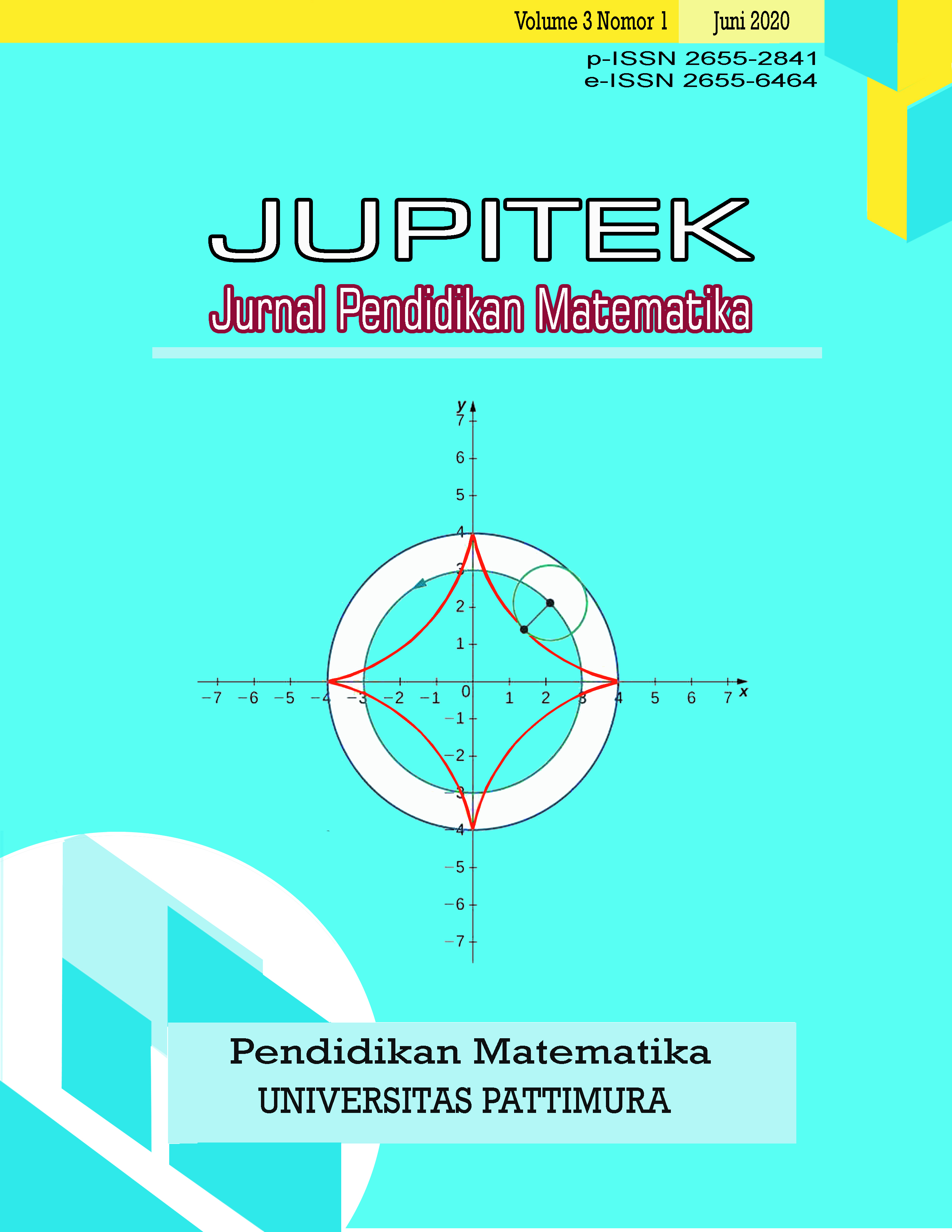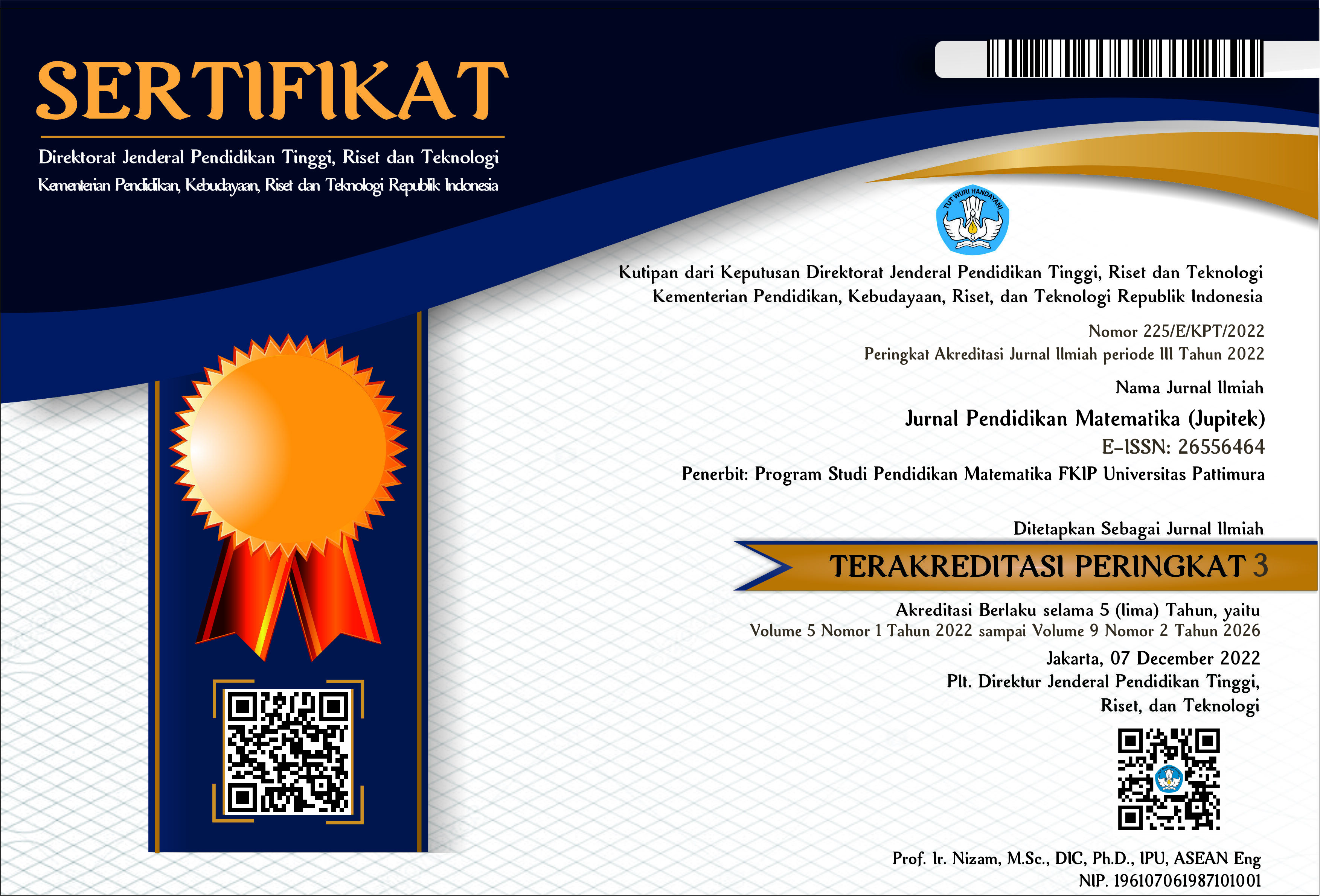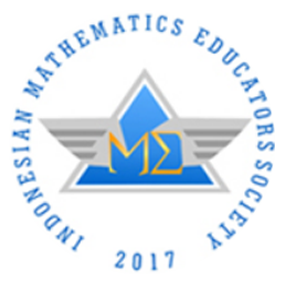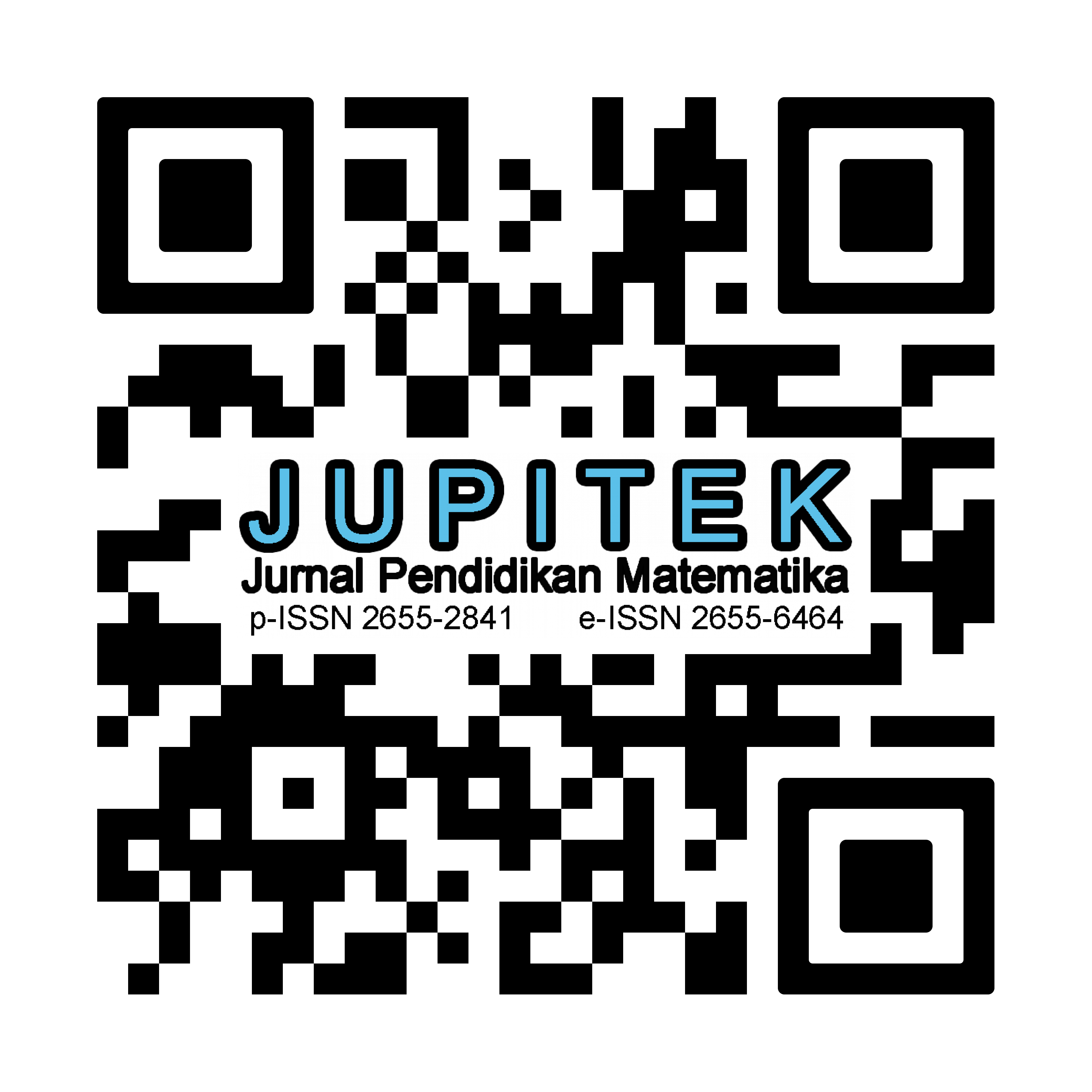PENINGKATAN HASIL BELAJAR SISWA PADA MATERI PROGRAM LINIER DENGAN MENGGUNAKAN MODEL PEMBELAJARAN PROBLEM BASED LEARNING
KAJIAN PADA SISWA KELAS XI SMA NEGERI 1 SAPARUA
Abstract
The purpose of this research is to improve students’ learning outcome on the topic liniear programing by using Problem Based Learning. This research is conducted in 11th grade students of senior high school 1 Saparua in academic year 2019/ 2020. Total number students on experiment grup is 25. This research took 2 cycles in order to achieve passing grade by most students. Every cycle consists of two class meeting. Data collected by using essay tests on each cycle and observation sheet. Further more, data analyzed by using qualitative nd quantitative analysis. The results show that students’ achievement on cycle I which reached passing grade is 56% of total number students. Meanwhile, students’ achievement which reached passing grade on cycle II is 80% of total number of students. There can be concluded that students’ learning outcome has improved 24% through Problem Based Learning
Downloads
References
Ajawaila, S. Dkk (2019). Pendekatan Permainan Tradisional Mutel Untuk Meningkatkan Hasil Belajar Tentang Lingkaran. JUPITEK: Jurnal Pendidikan Matematika, Volume 2 Nomor 2, Desember 2019 (Hal 55-60). Program Studi Pendidikan Matematika FKIP Universitas Pattimura.
Arends, R. I. (2008). Learning To Teach (Belajar untuk mengajar). Edisi Ketujuh Buku Dua. Yogyakarta: Pustaka Belajar.
Bili M.R & Ate, D. (2018). Penerapan Model Pembelajaran Problem Based Learning pada Materi Program Linier untuk Meningkatkan Hasil Belajar Siswa. Jurnal Penelitian dan pengkajian Ilmu Pendidikan: e-Saintika 1(2), (hal: 81-86).
Ngilawajan, D. A. (2013). Proses Berpikir Siswa SMA Dalam Memecahkan Masalah Matematika Materi Turunan Ditinjau Dari Gaya Kognitif Field Independent dan Field Dependent. Jurnal Pedagogia, Volume 2 Nomor 1, Februari 2013 (hal 71-83). Universitas Muhammadiyah Sidoarjo.
Niak, Y., dkk (2018). Perbedaan Hasil Belajar Siswa Pada Model Pembelajaran Kooperatif Tipe CIRC dan Model Pembelajaran Konvensional. Journal of Honai Math, Volume 1 Nomor 2, Oktober 2018 (hal 67-80). Universitas Papua.
Ratumanan, T. G & Matitaputty, C. (2017). Belajar dan Pembelajaran Matematika. Bandung: Alfabeta
Rusman, Model-Model Pembelajaran Mengembangkan Profesionalisme Guru, (Jakarta: Rajawali pers, 2013).
Suryosubroto. (2009). Proses Belajar Mengajar Di Sekolah. Jakarta: PT Rineka Cipta.
Susanto, A. 2013. Teori Belajar dan Pembelajaran. Jakarta: Prenada Media Group.
Titahena, T. J, dkk. (2019). Peningkatan Hasil Belajar Siswa Melalui Penerapan Model Pembelajaran Kooperatif Tipe Make A Match. Barekeng: Jurnal Ilmu Matematika dan Terapan, Volume 13 Nomor 1. Maret 2019. (Hal: 001-008). Jurusan Matematika FMIPA Universitas Pattimura.
Copyright (c) 2020 Ivone de HAAS, Juliana Selvina Molle, Darma Andreas Ngilawajan

This work is licensed under a Creative Commons Attribution-NonCommercial-ShareAlike 4.0 International License.
License and Copyright Agreement
By submitting a manuscript to Jurnal Pendidikan Matematika (JUPITEK), the author(s) certify and agree to the following terms:
- Originality and Authority: The submitting author is authorized by all co-authors to enter into this agreement. The manuscript describes original work that has not been published previously in a peer-reviewed journal, nor is it under consideration for publication elsewhere.
- Approval: Its publication has been approved by all author(s) and by the responsible authorities of the institutions where the work was carried out.
- Rights: The authors secure the right to reproduce any material that has already been published or copyrighted elsewhere.
- Licensing and Copyright: Authors retain the copyright to their work.
- License Grant: The authors grant Jurnal Pendidikan Matematika (JUPITEK) the right of first publication, with the work simultaneously licensed under the Creative Commons Attribution-NonCommercial-ShareAlike 4.0 International (CC BY-NC-SA 4.0).
- Self-Archiving: Authors are permitted and encouraged to deposit the published version of their article in institutional repositories, on their personal websites, and other academic platforms, with proper acknowledgment of its initial publication in Jurnal Pendidikan Matematika (JUPITEK).






.png)


